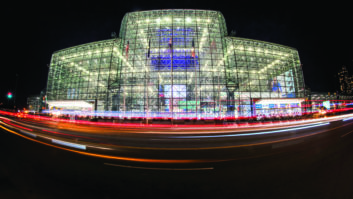The NAB is telling the FCC that radio and television stations remained on the air to deliver critical information during the recent “Derecho” storms.
The comments filed to PS Docket 11-60 are part of the agency’s inquiry into the reliability of 911 services following the June 29 storm that packed hurricane-force winds and the robustness of communications networks and networks in general.
In addition to EAS warnings, radio and TV deliver ongoing, local information about storm paths, shelter directions and evacuation routes before and during a crisis, the trade group tells the commission.
NAB cites WMOA(AM) in Marietta, Ohio, which deployed its generator for 60 hours until electric power was restored, and worked around the temporary loss of Internet access to provide emergency information during and after the storm. In similar situations, it’s common for stations to help each other out, noted the lobbying group, like rebroadcasting part of a downed station’s programming such as emergency instructions in another language, or to simulcast on other stations that have fewer news resources.
Despite the growth of cable, satellite and the Internet, broadcasting continues to be the primary means of communicating with the public before and after disasters. “[W]hen the electricity is out, causing the Internet and cable television to falter, over-the-air broadcasting can still be on the air and easily accessed by Americans with battery-operated receivers,” writes the trade group.
The storms reconfirmed the importance of efforts to expand mobile access to radio and television, including enabling FM chips in these devices, NAB notes.












